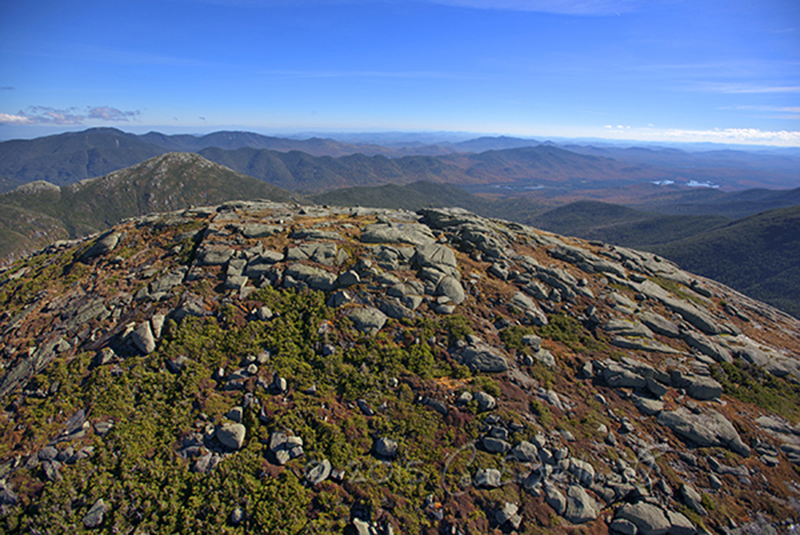By: Ryan Nerp – Adirondack Council Seasonal Research Associate
Wednesday, October 8, 2020
I made my way to Mount Marcy’s summit for the first time this season. This alpine area is a place I know well, after having spent three years as a full-time Summit Steward; and one year completing a botany survey for the New York Natural Heritage Program. Marcy contains examples of nearly all of New York State’s protected alpine species. Many can be seen directly along the edges of the trail, if you can keep your eyes down rather than gazing at the impressive views. Strong winds, thin acidic soils, and cold temperatures create a tough environment with only about 60 frost-free days per year. Here alpine plants have thrived for the past 10,000 years, a relic left behind by glaciers during the last ice age. While the grass growing down in your front yard is tough enough to withstand even the most solid hiking boots, the similar-looking sedges, rushes, and shrubs atop Mount Marcy can be killed from as little as one or two footsteps.
Deep Impacts Can Happen Quickly
The COVID-19 pandemic has led to many of us feeling a need to get outside, and it seems that the High Peaks have been subjected to a new level of crowding. I understand why so many people want to hike here – it’s beautiful! Unfortunately, every action has a greater impact above tree line. Plants can be crushed by careless footsteps, and in their void soils quickly erode through wind and rain. Once open bedrock is exposed it may take decades for new growth to cover it again. It’s important to always keep this in mind when visiting higher elevations, as actions may have unintended consequences.
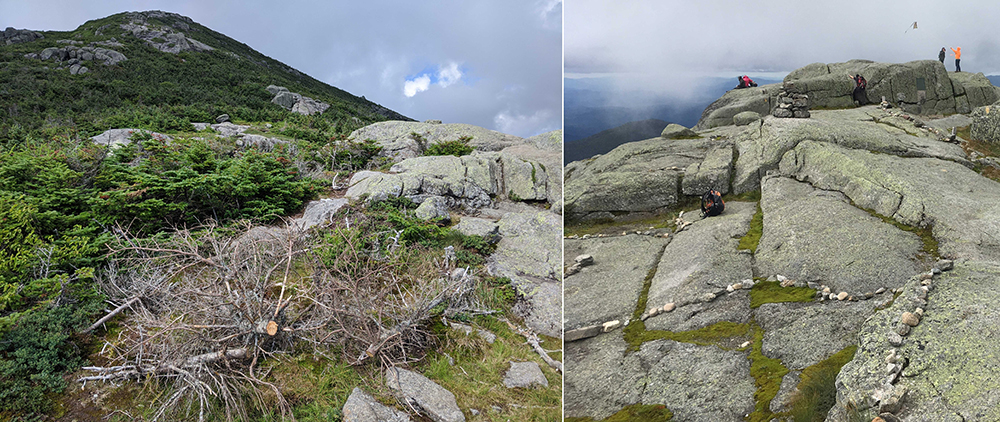 Brushing and scree wall
Brushing and scree wall
What can be done once damage begins to show? If a herdpath (also called social trail, game trail, or desire path) is beginning to form, Summit Stewards will cover the affected spot over with dead branches and prickly brush. This will camouflage the area and keep hikers on the intended trail, allowing damaged plants to recover. Rockpacking is another effective measure to prevent loose soil from eroding. Fist-sized cobbles placed over soil will allow mosses and pioneer species to grow in between them and eventually cover the area. Rock can also be used to build scree wall, which provides a visual cue for edges of the trail above treeline.
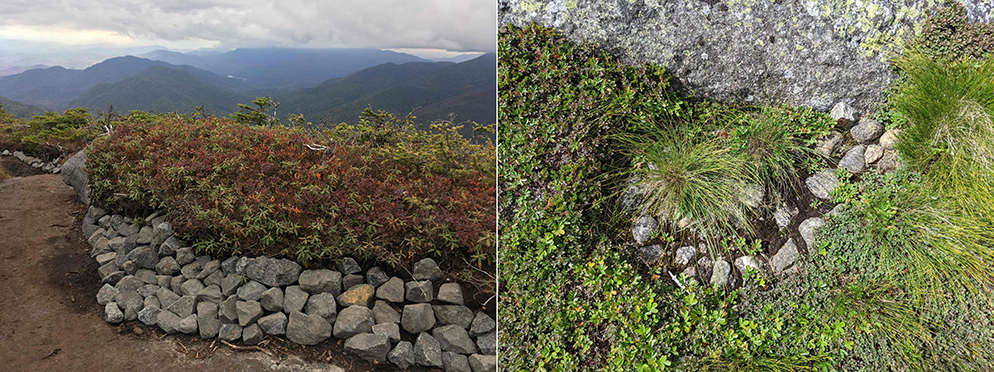 Left: rockpacking freshly placed. Right: rockpacking after several years without disturbance.
Left: rockpacking freshly placed. Right: rockpacking after several years without disturbance.
Hiding in Plain Sight
Even the small grasses growing in gaps along the trail are ecologically valuable. Directly between Marcy’s plaque and highest point is New York’s only population of Fernald’s Bluegrass. These 10 or so clumps happen to be growing in a mossy crack, which most hikers will need to step over during their time on the mountain. Here is where the Summit Steward’s message proves to be vital: “These plants are rare and endangered, please stay on the solid rock surfaces.”
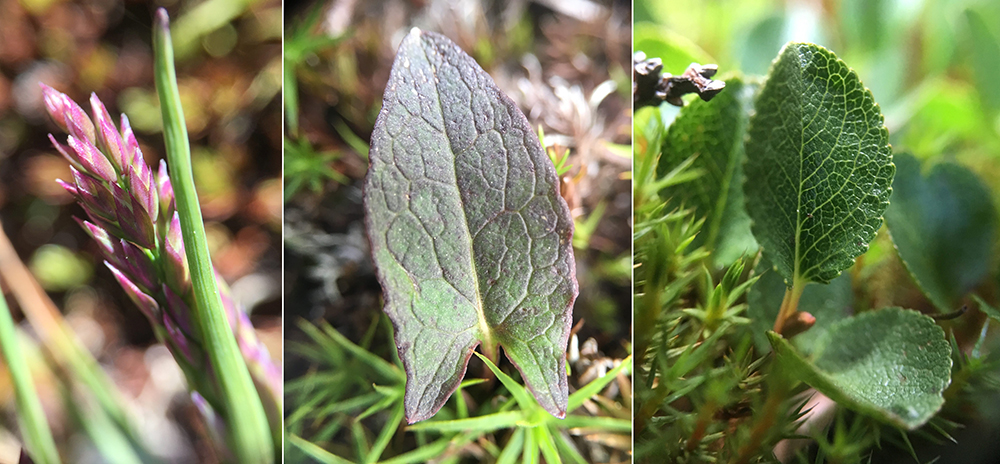 Fernald’s Bluegrass, Boott’s Rattlesnakeroot, Dwarf Arctic Willow
Fernald’s Bluegrass, Boott’s Rattlesnakeroot, Dwarf Arctic Willow
I rock-hopped my way off the summit and down to a wet, mossy, protected area at the base of a high rock wall. Known as a snowbed community, locations such as these tend to hold snow and ice much longer into the spring than other exposed areas. Alpine plants here tend to be slightly behind in their growing season, and sure enough, I quickly spotted some Alpine Sweetgrass still in flower. Further along the ledge is a small population of Boott’s Rattlesnakeroot. This species is special in that it only exists in 22 or so locations in the world, a third of which are Adirondack High Peaks.
Tucked underneath the Boott’s leaves are the last of a diminutive willow which was previously thought to be extirpated from the Adirondacks. Salix herbaceae, known as Dwarf Arctic or Round-leaf Willow was recorded as growing on both Marcy and Algonquin until the early 1980s. It was believed that an especially dry summer combined with trampling by hikers had killed the last one, until a Summit Steward carrying out botany surveys discovered these examples on Marcy. Continued protection may allow them to reproduce and develop into a sustainable population again.
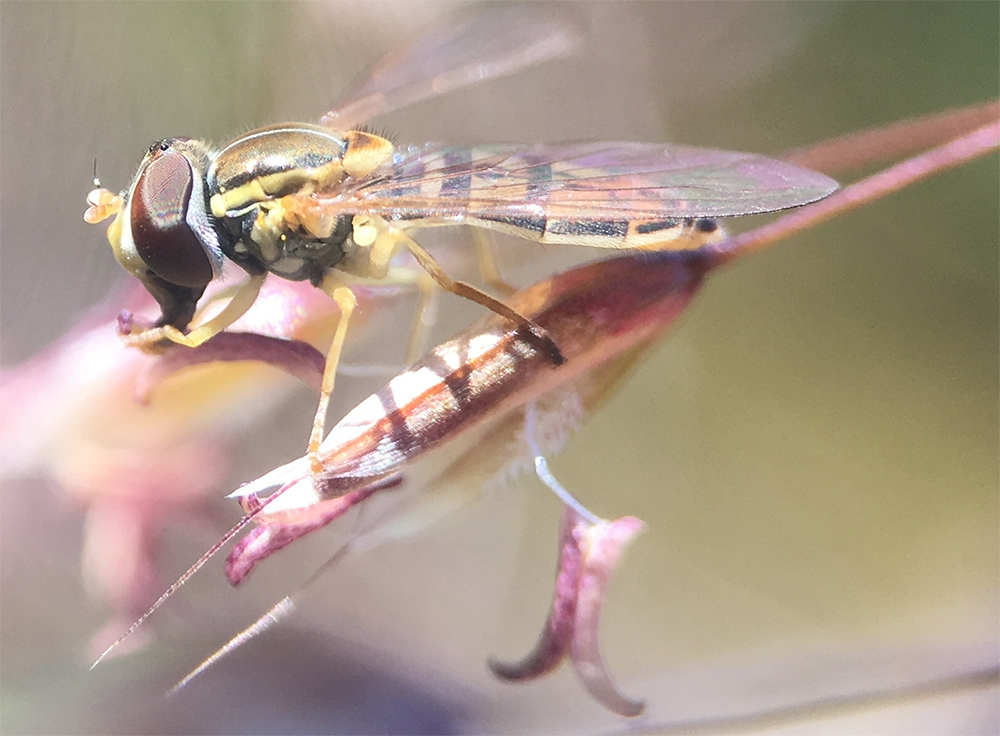 Hoverfly on fresh Alpine Sweetgrass flower
Hoverfly on fresh Alpine Sweetgrass flower
New York’s alpine areas add up to only 185 acres, of which less than half of these are vegetated. With steadily rising numbers of visitors, it’s important that we all understand just how fragile they are. Next time you hike above treeline, step only on solid rock and take some time to look down at the little plants that are adapted for this cold climate. Keep the message of stewardship in your mind as you hike and don’t be afraid to pass it along to others. These plants rely on all of us for protection.
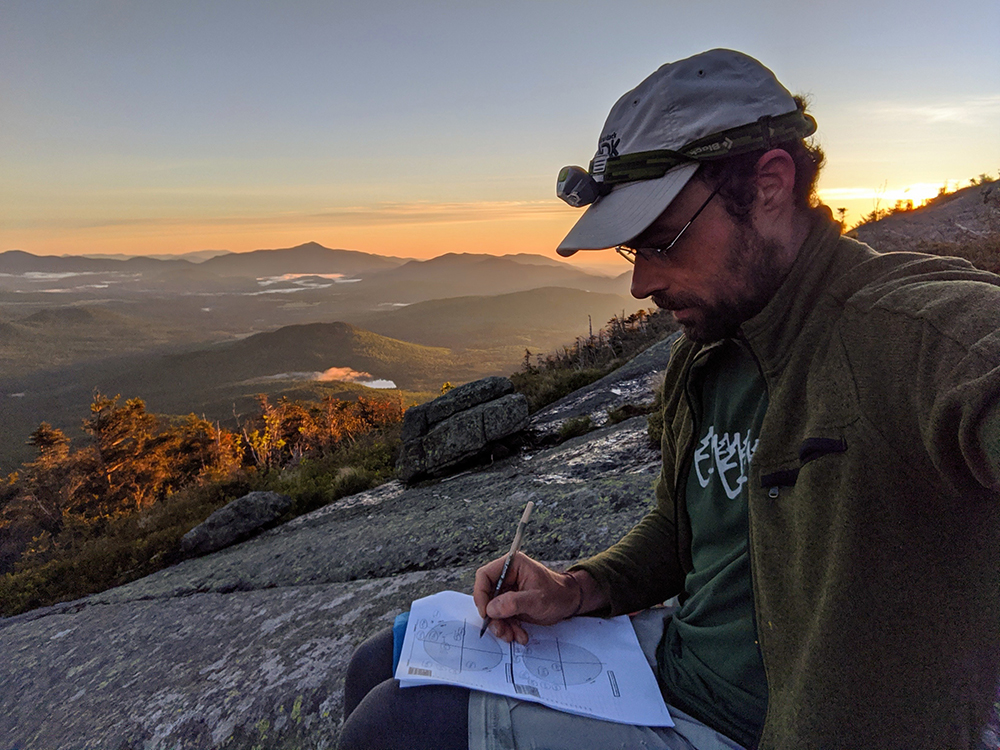
Ryan Nerp is a Seasonal Research Associate with the Adirondack Council. Born in the Catskills and now residing in Saranac Lake, Ryan completed degrees from SUNY Fredonia and Paul Smith’s College. He was a summit steward with the Adirondack Mountain Club for four seasons and spends his winters sugaring at Cornell’s Uihlein Maple Forest. On the weekends, you can find Ryan volunteer stewarding on the alpine summits or paddling one of the region’s many waterways.

